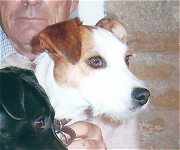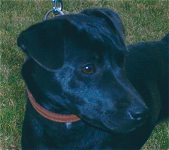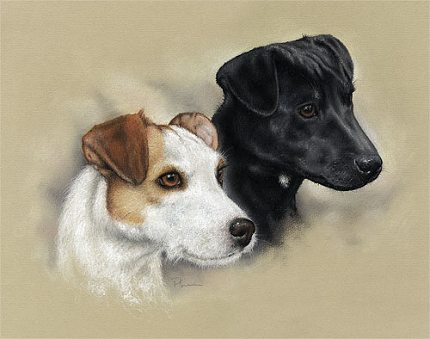Tips for effective photographs
A successful portrait that reflects the unique personality and appearance of your pet relies on the source material of the subject. To this end, it is important that you can provide effective reference photo's for me to work from.
I generally use one good view of the subject for the overall composition which is then supported by additional views that can provide information on markings, colouring and the little details that make your pet unique.
The following tips are meant as a gentle guide only. Successful portraits can still be obtained from pictures that might not fit these guidelines as I know only too well that the views captured of a much loved pet are often blurred! These would not prevent a good portrait as many such photos can serve as inspiration and information for the final image.
- Try to use photographs taken outside on a bright, but not sunny, day as this produces a more accurate representation of the structure and colouring of your pet. Indoor flash photography can often wash out colours and flatten the image (due to the "front-on" nature of the light source). If a flash photograph offers a fantastic view of your pet but has reflected back light from your pets eyes, don't worry as this can be drawn out in the final portrait. In this case an additional non-flash photograph would be needed to get the correct eye colour.
- Often what is called a 'three quarter view' of your pets head can create the best portraits. A view that is front-on can sometimes miss out the full structure of the head and can lack depth. Likewise, a side-view can sometimes lack personality and miss that all important expression and life in the eyes. Although this can entirely depend on the following guideline.
- Try and find pictures that convey the character of your pet. Pictures that show a typical expression or pose. This is something only the owner of the pet can truly decide as they will know their pet best. For example, a portrait of a happy-go-lucky family Labrador, would be hard to complete with pictures of the dog looking sternly into the distance or concentrating on next door's cat. Such images might be better for a portrait of a serious type of dog.
- Try to get down to your pets level. Or alternately bring your pet up to yours (a dog sitting in the back of a car or a cat up on a settee for example). This can give a more natural view of your pets head and facial expression. Try to avoid having your pet sat at your feet looking up for a treat.
- Don't worry about the background at all. As you will see from looking at my Gallery, the background in my portraits are usually tonal, designed to complement the final portrait rather than distract from it. If however, a particular background is important to you, for example, your pet's favourite spot in the garden or a countryside scene, this can be incorporated into the portrait at additional cost. Good images of a particular location will also be needed, although your pet need not be in them.
- Sometimes the best view of a pet is obtained by one person holding it while another person attracts its attention with a toy or some food. Any stray hands, harnesses or squeaky toys will not feature in the final picture! Similarly, any collars or name tags can be left out if you prefer.
- Try to get a clear close up image as this will enable me to include the detail needed for the realism that is a feature of my work.
- Try to include pictures that show your pets unique characteristics. Many dogs, for example, will carry their ears in an distinctive way. Such features can make all the difference.
Below you can see some examples showing the main source images I was given and the portraits I produced from them.
__________________________________
In this portrait of Zeus I have removed the helpful human in the background, the collar and tags and also added a tonal background. I also repositioned him slightly so as to direct his gaze more horizontally out of the picture rather than upwards.
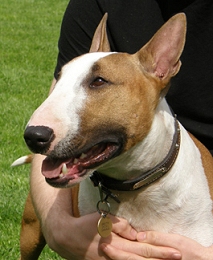
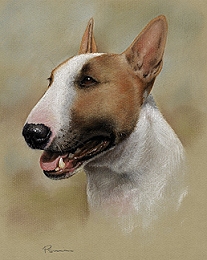
__________________________________
For this portrait of Caesar the main source image was not as good as for Zeus. It was taken with a flash, which reflected in his eyes and lightened his coat colours, and the tips of his ears have been missed off. In order to get his eyes right I used additional source images that showed the correct colour. I drew in his ear tips, deepened the colours and also added some subtle shading to counteract the effects of the flash and to lend more shape and depth.
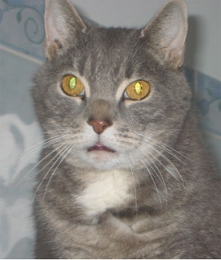
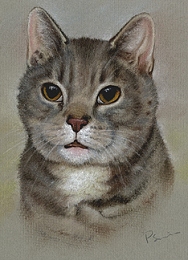
__________________________________
This double portrait of "Tilly and Flip-Flop" shows how two separate images can be combined into one picture.
